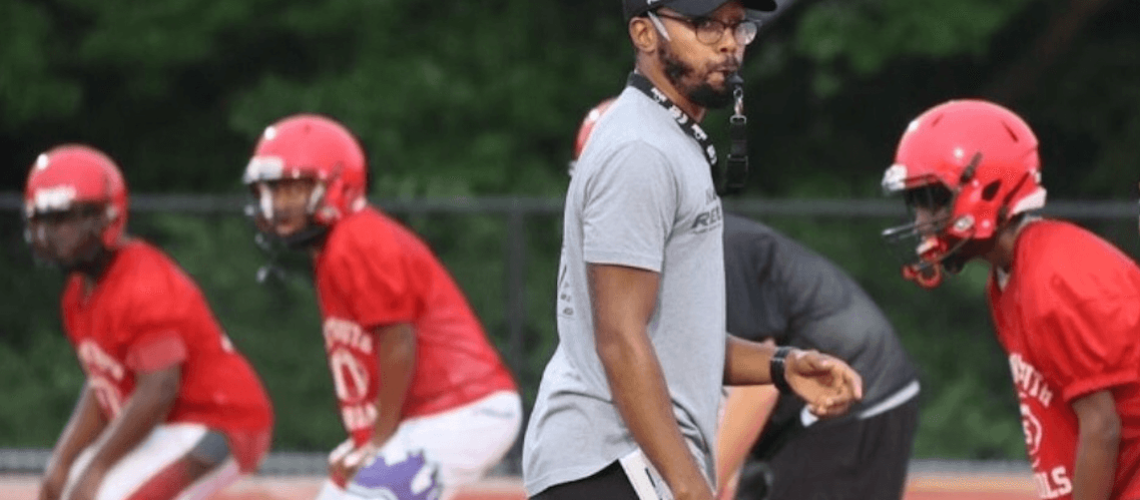By Monte Yancey, MS, CSCS, RPR L1
What if one program could not only build stronger athletes but also reshape the entire atmosphere of your school? At Raytown South High School, our strength and conditioning program has done just that—bringing back confidence, pride, and a sense of community to our students.
Coming out of a period of isolation during the COVID-19 pandemic, many students struggled to reintegrate into school life. We all faced this challenge, but as a school community, we had to relearn how to thrive. The weight room became more than just a place to build muscle; it became a catalyst for rebuilding the culture and atmosphere of our school.
Our strength and conditioning program played a pivotal role in this transformation. We didn’t just focus on physical fitness; we created an environment that empowered students, pushed them to grow, and fostered camaraderie. Here’s how it happened.

Starting From Scratch: Rebuilding with Purpose
In the spring of 2021, Raytown South’s student strength and conditioning program was virtually non-existent. We had only five female athletes involved, and some classes seemed to be filled with students just looking for an easy grade. Motivation was low, and many students lacked the discipline to excel in a structured environment. It was clear that if we were going to turn this program around, we needed to change not just the structure, but the mindset.
After assessing the needs of the program, we asked ourselves some critical questions:
- What does this program need to succeed?
- Where do we want to go with it?
- How far off are we from reaching our goals?
First, we knew our students were falling behind in physical preparedness compared to our competitors. Many athletes had little to no training experience beyond a few casual visits to the gym. We realized that along with improving their physical abilities—strength, power, speed, and mobility—we needed to boost their confidence and reestablish a sense of pride in being part of our school’s athletic tradition.
Building Confidence Through Competition
We created a competitive environment where students could see small, daily wins—whether it was in attendance, sprints, or lifting sessions. As they started to experience these small victories, their confidence grew. This competitive edge began to permeate other areas of their lives, including academics. By focusing on creating positive habits in the weight room, we were also teaching them life skills like punctuality, accountability, and the importance of delayed gratification.
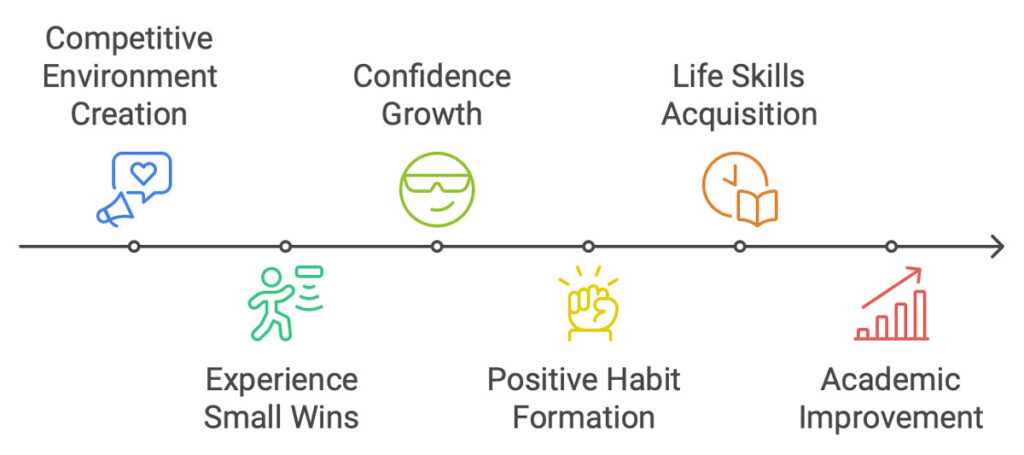
Slow and Steady Progress: Our “Slow Cook” Approach
We based our program on a long-term athletic development plan. Our students needed to understand that strength training was not just about lifting weights but about building lifelong habits that could reduce injury risk and improve their overall well-being.
We adopted a “slow-cook” approach, starting students with bodyweight movements, progressing to dumbbells, and eventually moving them to barbell exercises. This gradual progression allowed students to build strength safely while mastering fundamental movement patterns. Through this process, we started to notice a buzz around the weight room. Students were talking about the program, and even those not initially involved wanted to join. Peers took notice of the changes, not just in physical appearance but in confidence and attitude.
Creating a Sense of Pride and Community
As our students grew stronger, both physically and mentally, a shift began to occur throughout the school. Their confidence spread through the hallways. Students who once felt disengaged became active participants not just in the weight room, but in the school community. This ripple effect brought more students into the program and positively impacted the school atmosphere.
In the weight room, we established a theme for each week, such as “Perseverance.” We discussed how the theme related to their training sessions and their everyday lives. Students who were reluctant to train found themselves pushing through their initial hesitation and leaving the session feeling accomplished and ready to tackle the day. We taught them that, just like in life, showing up and persevering through tough times often leads to success.
Integration Principles Created Using HSSCC and Joe Kenn’s Tier System. You can create a progression template based on Joe Kenn’s Tier System and Coach Yancy’s phases, focusing on foundational movements, gradual progressions, and consistent reinforcement. Developed with High School Strength Coach Certified (HSSCC) principles, it provides coaches with cutting-edge methodologies to improve athletic performance. Here’s how you might structure it:
Progression Template Based on the Tier System
Tier 1: Foundation (Bodyweight Movements & Basic Techniques)
- Focus: Develop basic movement patterns and range of motion.
- Key Concept: Building confidence, learning the “why” behind each movement.
- Exercises:
- Push Plate Squats: Introduce the squatting movement with an external focus on depth and hip positioning.
- Bodyweight Squats: Reinforce range of motion and body control.
- Bodyweight Push-ups: Introduce upper body mechanics and core engagement.
Tier 2: Intermediate (Dumbbell Movements & Stability)
- Focus: Transition from bodyweight to weighted exercises, focusing on stability and control.
- Key Concept: Learning to maintain good form under load.
- Exercises:
- Goblet Squats: Focus on maintaining an upright torso and full range of motion with added resistance.
- Dumbbell Bench Press: Transition to upper-body pressing with increased load.
- Dumbbell Deadlifts: Teach hinge mechanics with moderate weight, focusing on glute activation and hip mobility.
Tier 3: Advanced (Barbell Movements & Power Development)
- Focus: Introduce barbell movements for strength, stability, and explosive power.
- Key Concept: Proper barbell form and progressive overload.
- Exercises:
- Zombie Squats: Teach front-loaded barbell squats without hands to focus on maintaining core and upper-body engagement.
- Front Squats: Progress to full barbell squats, focusing on form, depth, and weight progression.
- Barbell Deadlifts: Reinforce hinge patterns with heavier loads, progressing from dumbbells.
Program Philosophy
Word of the Week: Incorporate themes like perseverance, discipline, and resilience into training sessions. Each session will connect the word of the week to both physical and mental challenges the athletes face in the weight room and in life.
Mental Health Focus: Educate athletes on how regular training reduces anxiety and stress, and how physical training contributes to emotional well-being. Introduce the idea of the weight room as a “mini-version” of daily life, reinforcing the importance of showing up, even when they’re not in the mood.
Example Progression
- Warm-Up: Bodyweight squats, dynamic stretches, and mobility drills.
- Tier 1 (Weeks 1-3):
- Push Plate Squats (3 sets of 10 reps)
- Bodyweight Push-ups (3 sets of 8-10 reps)
- Tier 2 (Weeks 4-6):
- Goblet Squats (3 sets of 10 reps)
- Dumbbell Deadlifts (3 sets of 8 reps)
- Dumbbell Bench Press (3 sets of 8 reps)
- Tier 3 (Weeks 7-9):
- Zombie Squats (3 sets of 6 reps)
- Front Squats (3 sets of 5 reps)
- Barbell Deadlifts (3 sets of 5 reps)
Key Takeaways for Coaches:
- Progression: Start simple, build on fundamental movements, and gradually introduce complexity and load.
- Regress When Necessary: If athletes struggle, regress them to the previous tier to address form, mobility, or technique issues.
- Mental Resilience: Teach athletes the importance of discipline and perseverance, linking each training session to life outside the weight room.
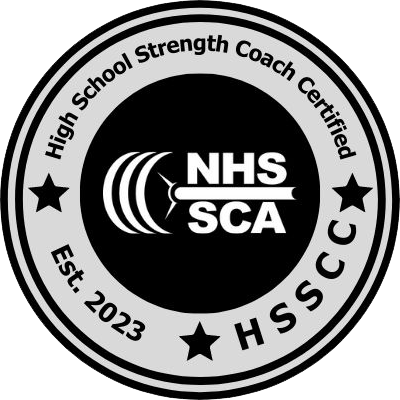
Integration Principles Created Using HSSCC Principles. This progression template, crafted using High School Strength Coach Certified (HSSCC) principles, exemplifies how to develop athletes through intentional programming. By earning the HSSCC certification, coaches gain access to advanced methodologies like these, helping their athletes excel in power, speed, and strength, while emphasizing proper technique and reducing the risk of injury.
What We’ve Accomplished
Since the inception of this revamped program, we’ve seen incredible results:
- 80% of our student population now participates in the strength and conditioning program.
- Our athletic programs have improved across the board, with stronger, more confident athletes.
- Students involved in the program have also shown improved academic performance.
Perhaps the most rewarding part of this journey has been witnessing the sense of pride that has returned to Raytown South High School. Our weight room is no longer just a place for physical training; it’s become a cornerstone of the school’s culture.
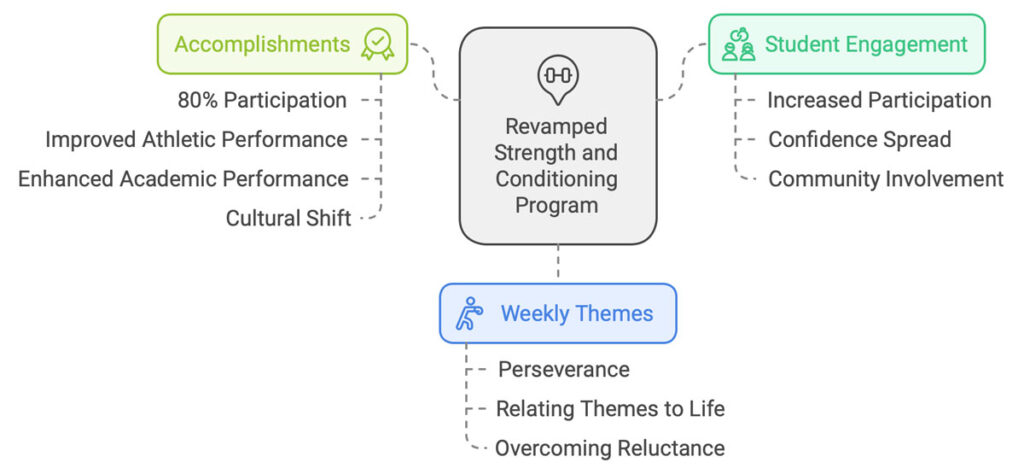
Looking to the Future
As we look ahead, we’re continuing to focus on the long-term development of our students. We want them to carry the habits and values they’ve learned in the weight room into their adult lives. We aim to instill in them a deep understanding of how regular physical training can help manage stress, anxiety, and mental health—skills that will serve them well beyond their high school years.
What if your school could experience the same transformation? By investing in a structured, well-rounded strength and conditioning program, you could not only develop stronger athletes but also reshape the entire atmosphere of your school. With the right leadership and a dedicated approach, you can create a program that builds confidence, instills pride, and fosters a sense of community among your students.
At Raytown South, we’re just getting started. Our students are stronger, our school spirit is higher, and the future is brighter. Could your school be next?
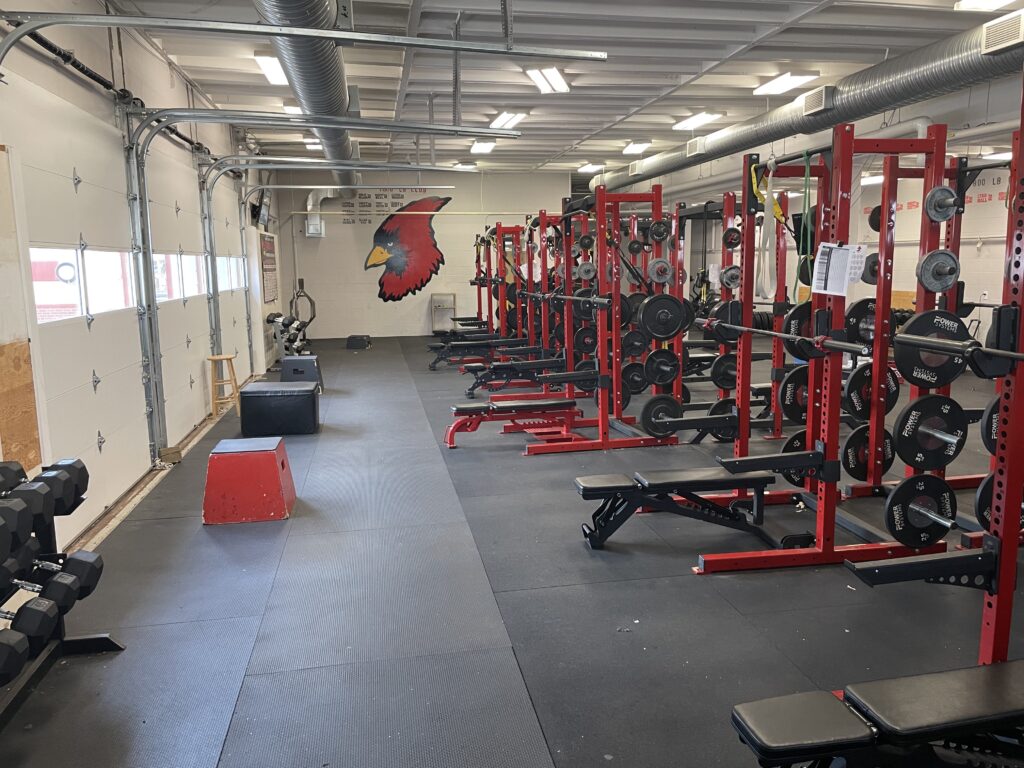
Monte Yancey is an Assistant Strength & Conditioning Coach and Physical Education Teacher at Raytown South High School in Missouri. He joins Head Strength Coach William Harris as an alumnus of Raytown South, and their staff is going into its fourth year at the school. Coach Yancey received his Bachelor of Science degree from Tennessee State University, and he earned a Master’s degree in Kinesiology from the University of Central Missouri.


